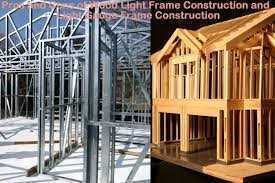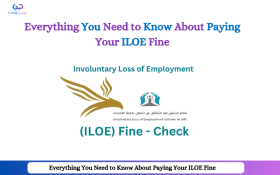Pros and Cons of Wood Frame Construction
Since the beginning of time, people have been building homes using wood frames. Even now, the best kind of building for the Dubai and many European nations are wood frame construction. Many landowners still choose to use wood over other materials to construct their homes. According to Hamill Creek Wood Homes, timber homes provide several benefits that are exclusive to them in addition to a distinctive and timeless appearance for your residences. They provide your home with a green appearance and transport you back to the great outdoors. For many people, their ideal home is a wooden structure set against a vast forest. Pic 1 Normal brick-and-mortar homes are unable to create this similar appearance. They do, however, have unique characteristics that set them apart from wood construction. Thus, choosing whether to construct a wood frame home or not may sometimes be a difficult decision for many people. One must weigh the benefits of constructing with wood frames against their drawbacks to properly assess that issue and come up with the most useful response. You may decide on the ideal kind of dwelling building for yourself based on the factors that are most important to you. To assist you in doing that, we'll discuss the different advantages and disadvantages of wood frame building in this post. Read the article through to the end to ensure you don't miss any important information. Pros Power-saving: The fuel efficiency which comes with having a timber-framed home is perhaps one of its more unexpected advantages. Timber homes are constructed of wood. Additionally, wood is a fantastic heat conductor! It may contain all the heat thanks to its characteristics. In this manner, your home will serve as an insulator throughout the chilly days of winter. You will also save a tonne of money on heating thanks to this heat insulation. If your house is built on a wood structure, you'll never have to fear it being too chilly. Better acoustics: This can seem like a small feature to some, but for those who live in heavily crowded locations and wish to safeguard their privacy, it might be a deal-breaker or deal-maker. It's the latter in the case of buildings with wood frames. These homes are excellent at reducing noise. You can be sure that your sound won't go very far outside of your four walls even if you purchase especially thin hardwood boards to wall your house with. Swiftly constructed: Because wood and wood are simpler to build than standard buildings, timber houses are built significantly more quickly than conventional brick-and-mortar homes. Many people often respond with the counterargument that although wood homes are built more quickly, the materials needed for the building take a long time to produce. It is correct that it will take a long time to create your home if you employ fully fresh manufactured materials for a wood building. The accessibility of prefabricated materials, which bypass the full manufacturing process and go straight to building, allows for a simple solution to this issue. Sustainability: Standard homes are constructed of non-recyclable materials, which only serve to deplete the planet's finite supply of resources. On the other side, timber buildings are manufactured from wood, a sustainable resource. Trees that are felled for building materials may almost instantly be planted again. Utilizing a wood home essentially means substituting non-renewable resources with materials that are essentially naturally renewable and ever-sustaining. This implies that your wood homes are likewise earth-friendly. Better air quality: On many occasions, a great number of individuals have remarked that the air quality inside the timber dwellings was noticeably superior. The air quality in standard dwellings is not capable of being maintained. The greenhouse gas emissions that are produced by conventional houses are higher, and these homes are unable to provide the same degree of quality indoor air as wood homes. Cons Rotting: In contrast to traditional houses made of brick or concrete, wooden structures are susceptible to decay and mold growth. Therefore, property owners are obligated to adopt the necessary preventative measures and safeguards to forestall the development of rot. There are specialized window seals and wood planks available on the market that may limit or stop the entry of moisture. Environment-related risks: Wooden homes come with their own set of environmental dangers and hazards. The assault of insects on your apartment's walls & crevices is the issue that poses the greatest threat. Your wooden house may have only one little hole that an insect may use as a nest, but before anyone knows it, you're dealing with a pest infestation. Due to their wooden construction, timber buildings attract more insects and even animals, making them a significant environmental risk to occupy. Higher fire hazards: This is the worst drawback of all for wooden frames since everyone is aware of how easily wood catches fire. If someone chooses to buy a house with a wood frame structure, they should be warned that it is more inclined to catch flame than a house made of brick or concrete. Your whole wooden house may catch fire in the kitchen due to one stupid mistake. Nevertheless, a variety of fire-resistant materials are increasingly being utilized to put out flames, and the installation of sprinklers may stop serious mishaps from occurring. Structural limitations: Not least among other structural limitations, wood frames have extremely few characteristics. A wooden home cannot be customized to your preferences the same way a concrete home can be. Their customization is very constrained by this one fact. A home constructed of a wood frame structure may not be the greatest option for you if you like personalizing your home to meet all of your structural demands.


















